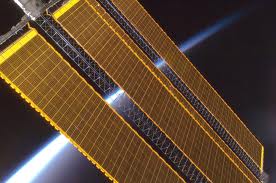Solar Panels
CREDITS
Anshul (ICSA)

There is more than one type of solar panel, but almost all work the same. When silicon absorbs sunlight, an electron is excited into a state which is removed. In other words, this electron is now free to move around the entire panel with very little barrier. However, in a piece of plain old Silicon, there is no reason for it to go one direction rather than another (and electricity is the net movement of electrons in a single direction). In fact, the electron will move around in the Silicon randomly, and then eventually this electron will simply return to the ground, or unexcited, state and release heat. However, in the solar panel, there is something called a junction, where two slightly different materials meet. The two materials are actually both made of Silicon, but each one has a tiny percentage of other atoms mixed in with a different element. When an electron reaches this junction, it is either accelerated across it, depending on which direction it is coming from .When sunlight is absorbed, the free electrons now only flow in one direction, from one side of the junction to the other, driving a current through the external circuit. All solar panels produce only electricity. What can it be used for? It's great for lights, air conditioners, microwave ovens, technology, and more important things we use in our daily life. Facts-
1. It takes about eight minutes for energy to travel from the sun to the earth.
2. There are two types of solar panels: Photovoltaic or PV panels. These panels convert sunlight into energy; Solar Thermal panels. These panels work by absorbing the heat. Water is then circulated through it to heat for household purposes and even swimming pools.